Still Life With’s 2011 Guide to Food Photography Gear
I can’t believe how long it has been since I’ve posted about what equipment I’m using these days. In fact, I’ve started this post on more than one occasion, and left it idly sitting by, unfinished. And, there is a fair reason for that: my equipment hasn’t changed much in the past few years. That’s the beauty of great camera gear. A high quality lens can last you forever. My workhorse lenses, while a bit spendy when I bought them, still work beautifully and keep me from “ooo, shiney new lens” envy (at least most of the time). Anyway, there are a few new pieces that have worked their way into my regular gear, so it seems time for a recap.
Let’s start with the basic gear: body & lenses. I’m still using and loving my Canon 5D MII. There are some rumors out there that a 5D Mark III may be coming later this year (typically 6 months after the 1Ds replacement comes out, which folks are hoping to hear about in April).
I commented the other day on Twitter that you can make a great photo with any lens, but it might not be the photo you wanted to make. Lenses do make a difference; you aren’t going to get the same shot with a 50mm lens as a 100mm lens, and images with a 5.6 aperture aren’t the same as those with a 2.8. When you make a big investment in camera gear, it really should be in the lenses before the body. Save up, and get the best lenses you can for the type of work you want to do.
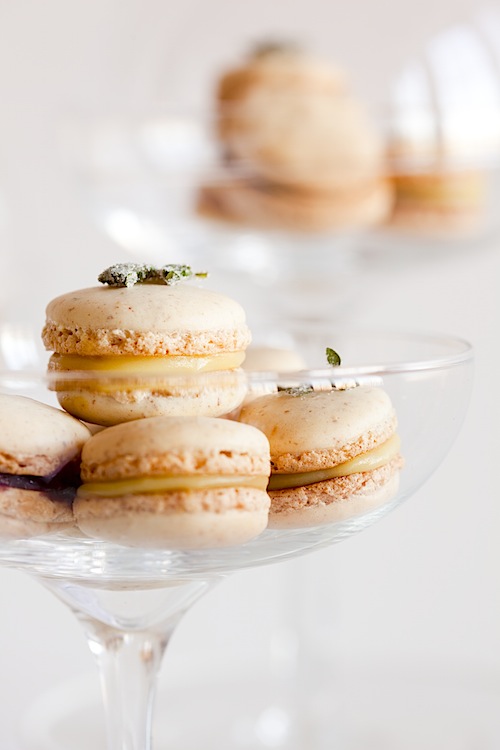
Taken with the Canon 100mm 2.8 macro with natural light via northern window
I’ve had the same 100mm 2.8 macro for over 6 or 7 years, and while the new “L” version is definitely tempting (shiny new lens!), I’m just not convinced that the difference is worth the $1700 when I still love the quality of images with the original. I use this lens on over 1/2 of the photos I take. When I do get around to a new lens purchase, however, it will probably be this upgrade.
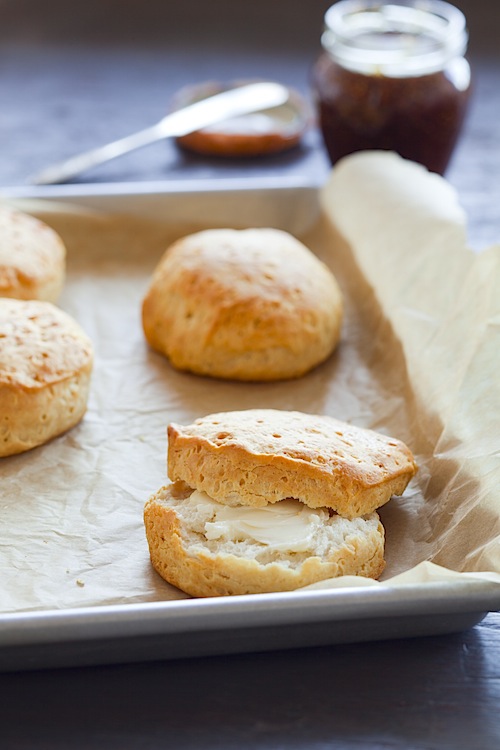
Taken with the Canon 90mm 2.8 t/s with natural light via southwest window
The next lens I use often is the 90mm 2.8 tilt-shift. Again, this is a lens I’ve had for quite sometime. There was a period when I used it for almost every tabletop shot I took, but I’ve backed off from that some this year. The tilt-shift effect for food photography (not the Photoshop tilt-shift “miniturizing” effect you see all over the web) is incredibly useful for changing the plane of focus, so, for example, you can get the whole surface of the soup in focus while still keeping the image soft. This lens is a really huge investment though, and unless you are shooting for a lot of commercial applications, is beyond the needs of most photographers. Still, there are shots that you simply cannot capture without the tilt…
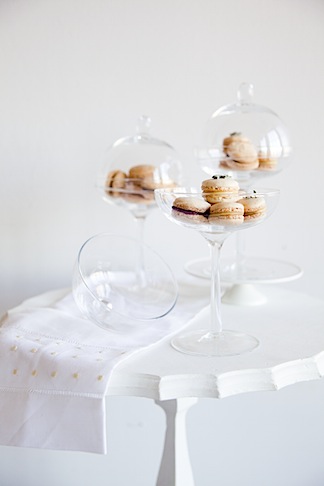
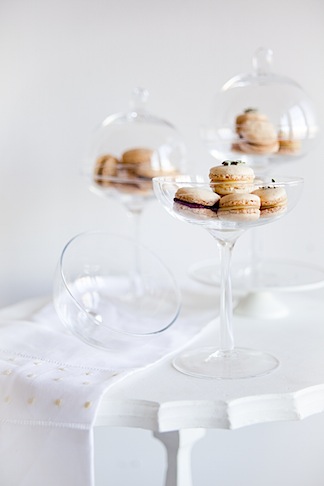
The newest lens I’ve gotten, and one that quickly made its way into my regular rotation, is the 24-70mm 2.8. I love this lens. I’ve had the 24-105 4.0 L for years, but that hasn’t really seen the light of day since I picked up the 24-70. It’s a great lens to take to the market or to use in the studio. The short minimal focal distance let’s you get right into the shot when you need a tight one, while it’s a fantastic wide angle for full tabletop shots. Did I mention I love this lens? I got the Sigma brand of this lens (all my other lenses are Canon). The Canon version is great, and maybe a touch sharper, but I’ve had no problem with the Sigma and the price difference is significant.
I still have a few other lenses that I use on the rare occasion. The 50mm 1.4 and the 80mm 1.8 still make it into my bag. And on a rare occasion, I pull out my 45mm 2.8 tilt-shift. But it’s really unusual when those get used these days.
Oh, and speaking of bags, I have a broad selection of bags to choose from, but I almost always grab my emera bag. Love this bag. Mine is in grey.
What has changed a lot is the lighting gear I’m using. Several years ago, I moved from the Tota lights to a set of speed lights (small, portable strobes). These little strobes are easy to throw into a bag, along with a stand and umbrella, and give you great, soft light that is easy to set up and bring with you on any shoot. And they don’t require a power source, something that can definitely pose a challenge on location.
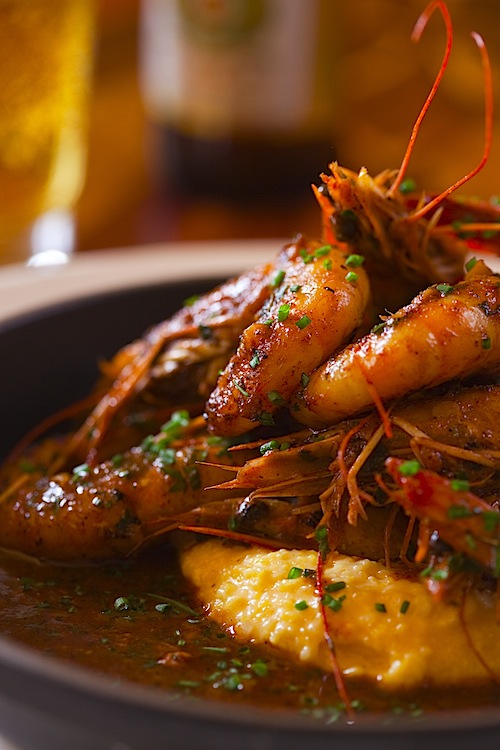
Shot with two speedlights with umbrellas
Of course, shortly after I got rid of my continuous Tota lights, I started shooting some short videos with my dSLR, and once again needed continuous lights. Since these just live in the studio, I went for a pair of large continuous light soft boxes, which work great.
Most recently, I picked up a pair of Alien Bees SB800s for a bit of flash in the studio, when the day calls for it. These are fantastic studio strobes; not crazy expensive but plenty of power for any tabletop shot. Typically, when I use strobe, I use a single strobe diffused with a large softbox. The Alien Bees softboxes are super easy to setup (much quicker than the softboxes that are on the continuous lights I have) as they have a frame that collapses and opens sort of like an umbrella. No crazy straining to stick rod A into slot B. But, at least with the gigantic soft box, it is very easy to knock over (or fall over on of its own accord) even if you have the whole shebang on one of the heavy duty light stands. So, most of the time, I’m finding myself doing a simpler diffusion technique of just bouncing the light off the wall, shooting it through a muslin drape or even taping on a sheet of vellum over the front surface.
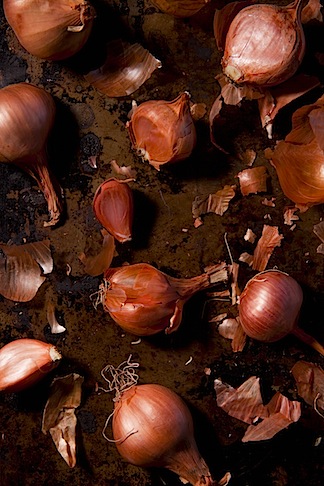
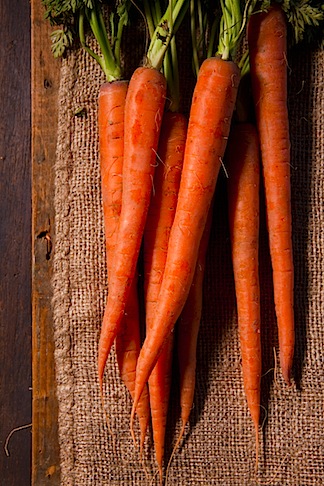
Shot with 1 diffused Alien Bees SB800s
While I do love using natural light, and still use it most of the time due to cable aversion, there is definitely something to be said for being able get just the right light just where you want it. Don’t trust anyone who says natural light is the only way.
For accessories, I’m still using the same old Manfrotto legs and Really Right Stuff ball head. These will last for years and years. I really can’t imagine getting another tripod; if I ever find I need more than this one, I’ll be stepping up to a studio camera stand (ooo…shiny studio camera stand!)
In the studio, I have 2 large C stands to hold up whatever needs holding. Some days, it’s curtains (or more likely a tablecloth hung up as a curtain) for a soft backdrop; some days it’s a large piece of foamboard bouncing light or blocking it off. Somedays it is football cards meticulously glue-gunned to crepe paper that sadly just never really made sense in the shot.
Software-wise, since making the switch to Lightroom a few years back, I couldn’t be happier. The latest version is even better, allowing you to make some quick and dirty pixel edits (like crumb removal) before exporting those raw files. I still do a round of deeper edits in Photoshop, but luckily, each image only takes about 5 or 10 minutes of fine detailed editing now. I’m using Photoshop CS4, but I’ve really stopped recommending full on Photoshop for editing unless you do a lot of serious graphic design. Lightroom + Photoshop Elements is all you really need and will save you a bundle.
By the way, Lightroom added the ability to shoot tethered directly, but they are still missing a critical piece for me… the ability to change the camera settings on the fly. So, I’m still using the Canon software to do the actual tethered shooting with the auto-import hack in Lightroom to import the images. It’s a little annoying to have to switch back and forth, but until Lightroom gets a real tethered shooting UI, it’s a better option.
Oh – while I’m thinking of it, I also picked up both of the new food styling books from the last year. If food styling is your thing, it’s worth grabbing both of them. My friends Denise Vivaldo and Cindie Flannagan wrote The Food Stylists Handbook which is packed with beautiful photos and practical tips whether you are starting a food styling business or just want to know more about the world of food styling. You’ll definitely pick up a few useful tips.
Delores Custer’s Food Styling is really the bible of food styling. While most of it covers very commercial techniques, there is plenty of useful information for those who don’t want to use shortening and powdered sugar in place of ice cream. The cover price is pretty hefty though, so it’s a better fit for those who really want to make food styling their career… in which case, I’d say it is a must have. If nothing else, you’ll learn a neat way to cut citrus fruits!
And, have I mentioned that I have a book coming out later this year? Oh yeah, I don’t think I have. Well, I do. And it’s on food photography and styling. I can’t share too many details yet, but the manuscript draft is in, photos are being uploaded as I type, and I’m sure I’ll be able to tell you more about it soon!
Congratulations on your upcoming book! How exciting for you and the rest of us who will benefit from your expertise!
I absolutely love and appreciate when you post on your gear. It not only inspires but is also incredibly useful when looking forward.
xx
Congratulations on your new book. I’m looking forward to buying it. I’ve learned much from reading your blog and can’t wait to get my hands on the book. 🙂
Thanks so much for sharing your gear list and for the sample photos. I’m always wanting to improve and finding the right look/lens combo for my food photography, so thank you for this and for inspiring me 🙂
Congratulations! Your pictures are splendid.
Cheers,
Rosa
Well Said Rosa. Really… i was very much inspired from her photgraphs and looking forward for new lenses always.
Cheers,
Simjen
just discovered your blog! It´s amazing! speechless!
I love your blog, although I’ve never commented. Thank you for providing this information on food photography. I really want to make a career switch into food photography/styling. Right now I work as a chef in restaurants, as well as a personal chef, and the restaurant life is a crazy life! I’m only 25 and I already have a bad back, bad knees, and more burn scars that I want to count.
I will be buying the food styling book you’ve recommended, as well as the one by Helene Dujardin that’s coming out soon.
I wish I could attend some of your workshops. Thank you for the tips.
Thanks for sharing the tips, and I’m really looking forward to your book. I am a total newbie (I’ve received my first dSRL three months ago and currently have only one lens, a 90 mm macro) but the more I learn, the more I want to learn. Especially on the lenses people actually use!
Lara, thanks so much for taking the time to share yoru equipment with us. It has been a very helpful post. If you had to pick between the 100mm macro and teh 24-70mm lens, which one would you chooose for food photography? Thanks so much once again. And congratulations on the book!
Congratulations on your forthcoming book and thank you for the lovely tips—your photography is inspirational!
Thanks for sharing! Very informative, and I’m always on the lookout for new lenses 🙂
Congratulations lara!! Can’t wait to see your new book!
Thanks for all the information, I am about to follow up and do some more research. I look forward to your book, the more info the better the community.
Thanks so much for this VERY helpful info!
So cool! I can’t wait to get your book. I am very inspired and now very informed for what gear I can hope to borrow from Seth. Some of it though is so different from landscape photography that he never uses, like lights. Might need to get my own gear or just practice more with what I have. Thanks!
Thank you for posting about the lenses, lights and books that have been useful to you. Any info like this is very helpful for a new food blogger like me. I use a Nikon D80 and with a AF Nikkor 28-80mm f3.3-5.6G lens and natural light from the kitchen window for my food blog shots. My next purchase will be a AF Nikkor 50mm f/1.4D, so at present I don’t have the budget for some of those nice lights you mentioned, but was wondering if the option of using two or more incandescent clamp lights ( http://www.homedepot.com/buy/lighting-fans/work-lights/designers-edge/8-5-in-incandescent-clamp-light-52188.html )
would work in a pinch when the sunlight is not cooperating, and if so, do you have any suggestions on proper lightbulbs to use. (I have read suggestions of using 40w daylight spectrum compact flourescent bulbs as well). Thanks for your help and beautiful photos and blog-looking forward to your new book!
I love your gear posts…I’m so inspired to explore other ways of lighting that are user friendly after reading this.
I’m so looking forward to the release of your book!
Beautiful!! Great write up! Can’t wait for ur book!!
Oh my! CONGRATS on the upcoming book. I’ll be preordering THAT puppy! 😉 Your work is stunning, Lara. It’s amazing how you make food shot with flash look like it was in front of a sunlit window. Stellar! Thanks for sharing so much about what you do. I’ve learned so much from you. THANK YOU.
This was so helpful! I have been studying your food photos for a while and this post answered so many questions that I havent gotten the chance to ask yet.
Also, Congrats on your book. I cant wait to get it!
I’m pretty sure that was me you commented at on Twitter the other day (in response to a tweet about someone telling me it doesn’t matter what kind of camera you use). This is so helpful. Thank you, Lara.
Very excited to hear you have a book coming on food photography and styling! Can’t wait.
Thanks for sharing what’s in your bag and studio Lara, very helpful tips and links. Totally agree about the importance of creating the best lighting conditions possible when you need it, natural or otherwise. I’m slowly but surely getting to know my speedlight better….reading your post prompted me to take it out and play with it 🙂
Very envious of your tilt-shift lens, and very excited for your new book!
Oh, for some reason I didn’t see the bottom portion of your post. You have a food styling book coming out also?!?!?! I was wondering why everyone kept saying congratulations! Can’t wait to hear more about it.
Oh, for some reason I didn’t see the bottom portion of your post. You have a food styling book coming out also?!?!?! I was wondering why everyone kept saying congratulations on the new book! Can’t wait to hear more about it.
Thank you so much for sharing the equipment you use. Your photos are gorgeous! Congratulations on the your new book.
Great post Lara! It’s always good to know what others are using! And I am so gonna buy your new book! Can’t wait for it to appear!
Thank you for writing this informative and candid post on your photography gear.
Congratulations on your new book…looking forward to preordering it. Please share details as soon as you’re able. =)
Love all the photo tips! I was just thinking about looking for new lens recommendations, and then I saw your post!
Can’t wait to check out your book! I’ve been intrigued lately by the idea of food styling and am very excited to have some guided reading and tips.
Thank you!
Hi Lara! looking forward to the book. I have been having lots of fun with my new food blog. loved seeing some of your gear choices and also to see some similar things we use. What is tethered shooting with lightroom? is that shooting to a computer? I need to learn how to do that sometime.
Hope your well, Valery
Lara, thank you for sharing these so generously. I am a Canon user as well so I really appreciate the insight to the lenses 🙂
Thanks for sharing this, Lara!
Can’t wait for your new book! Congrats!
LOVE YOUR PHOTOGRAPHY :O)
Wonderful and very useful post, Lara! Thank you for sharing this with us. And congrats on your new book! I can’t wait to get my hands on it! Your photographs are gorgeous, you are a huge inspiration to me.
Very useful post as always. I have been a fan for ages and hope to meet you at the Boston conference in June. We are coming over from South Africa.
Hope you don’t mind but have you as a link on my new blog
http://www.marmiteontoast.co.za
I am sure alot of South Africans will love your site.
Great post- thanks so much for all the helpful info. Love your work and I am so happy to hear you have a book coming out on food styling + photography…I will surely buy a copy!
Congratulations on your new book and thanks so much for sharing your lighting and camera gear information.
I am relieved to see that I am on the right track since I am using a similar set up and similar lenses from Nikon.
You are always an inspiration to new food photographers. Thanks for sharing.
Congrats. Can’t wait to have hands on your book!
Lara, Thanks for once again sharing your knowledge with the rest of us – so greatly appreciated! And I look forward to your upcoming book. I will definitely buy one:)
-Erin
Lara,
I’m like you and often pine for new shiny equipment.
Best purchases in the past few years for me?
… Foba camera stand – smooth like butter!
… short C-stands – we call them “Stubbins”
Also, I agree about Delores Custer’s book. Great for anyone in the food photography business.
– Kyle
thank you so much for posting this – it’s really generous to share how you do what you do. I’ve read ‘helpful’ posts, and they tend to be, ‘really, just use natural light’. I’ve tried that, and my food photos still don’t have the hue and feel of the photos (like yours) that I like so much. So, thank you for the details.
Also, like everyone said, thank you for posting this! You are so added to my RSS it’s not even funny! But quick question, when you shoot tethered, what cord do you use? Is it a special cord & how long do you keep it?
Thanks if you get to this it would be awesome!
Kate
Nice tips on this one… thanks!
This is an awesome post. I have been thinking of making the transition from my point and shoot, but there are so many cameras in the market that I dont know where to start, so imagine how I feel with the lenses. Thanks for this easy to understand breakdown.
very nice post.your tips are really valuable. thank you so much.